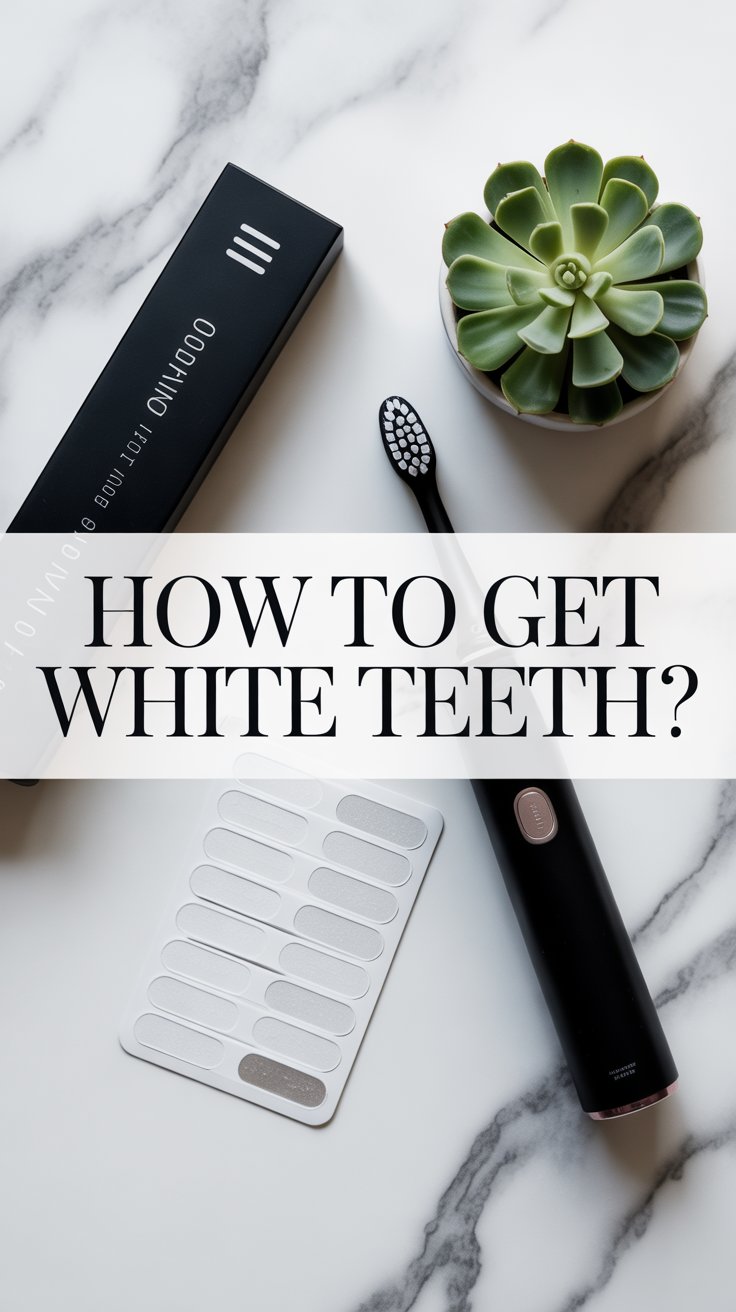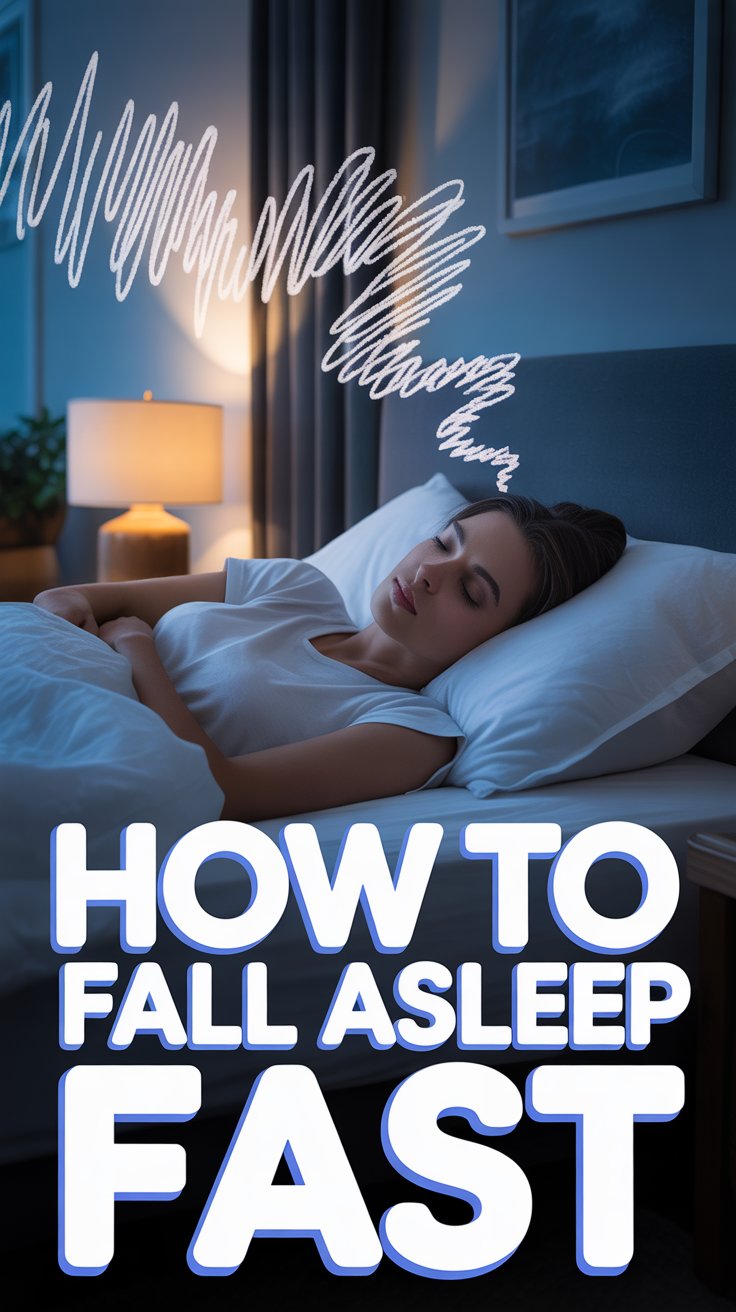Let’s be honest for a second. You’ve seen a photo of yourself, mid-laugh, having the time of your life, and your first thought wasn’t, “Wow, I look so happy.” It was, “Are my teeth really that… yellow?” I’ve been there. My love affair with coffee is legendary, but my teeth were starting to look like they’d been soaking in it overnight.
So, you’re wondering how to get white teeth. You’ve seen the million-and-one products promising a Hollywood smile, the questionable DIY hacks on TikTok, and the dental ads that cost more than a month’s rent. It’s a lot. But don’t worry. I’ve navigated this confusing world, made a few mistakes (hello, sensitive gums), and found what actually works. Think of me as your guide on this quest for a brighter smile.
First Things First: The Daily Grind for a Brighter Smile
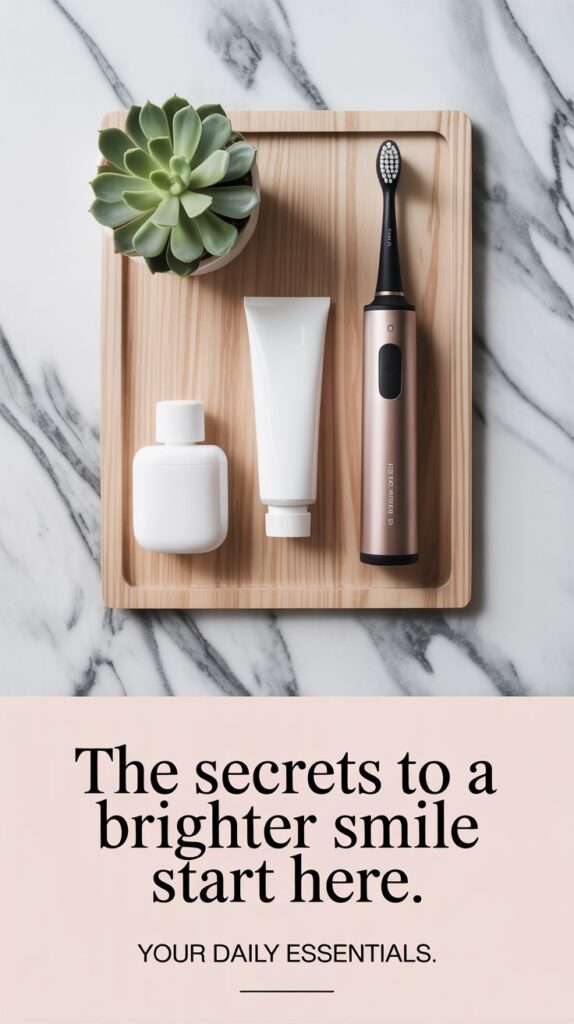
A modern, sunlit bathroom with a sleek vanity. On the counter, there’s a stylish electric toothbrush, a tube of whitening toothpaste, and a roll of dental floss next to a small succulent plant. A large, round mirror hangs on the white tiled wall, and a fluffy grey rug sits on the floor. The room is clean, bright, and has a spa-like feel.
Before you even think about bleaching trays or fancy lights, you have to nail the basics. I know, I know, it’s not the sexy, instant-results answer you wanted, but trust me on this. You can’t build a beautiful house on a shaky foundation, and you can’t get a dazzling smile if your daily routine is slacking. This is the stuff that prevents new stains from setting up camp on your enamel.
Brushing: More Than Just a Morning Chore
We all brush our teeth, but are we really brushing them? For years, I just mindlessly scrubbed for what felt like 30 seconds and called it a day. The game-changer for me was an electric toothbrush with a two-minute timer. It takes the guesswork out of it and ensures every quadrant of your mouth gets the attention it deserves.
Here’s a pro tip I learned the hard way: don’t brush immediately after eating or drinking something acidic (like coffee, soda, or orange juice). Your enamel is temporarily softened, and brushing can actually wear it away. I always wait at least 30 minutes. It feels weird at first, but your teeth will thank you.
The Toothpaste Dilemma
Walking down the toothpaste aisle is an exercise in choice paralysis. Whitening, anti-cavity, charcoal, sensitive… which one do you pick? IMO, a good whitening toothpaste is a great first line of defense. They don’t dramatically bleach your teeth, but they are fantastic at scrubbing away surface stains before they become permanent residents.
Look for toothpastes with mild abrasives like hydrated silica or active ingredients like hydrogen peroxide. I personally find that the ones with peroxide give me a little extra sparkle. They won’t give you paper-white teeth overnight, but they absolutely help maintain your brightness day-to-day.
Don’t Forget to Floss (Seriously)
I can feel you groaning from here. But listen, flossing is non-negotiable. Plaque loves to build up in those tiny spaces between your teeth, creating a yellowish, dingy look that no amount of brushing can fix. Removing that gunk instantly makes your teeth appear cleaner and brighter.
If you hate traditional floss, I get it. I find it tedious, too. Try floss picks or, even better, a water flosser. A water flosser feels like a power washer for your mouth, and it’s weirdly satisfying. Whatever you choose, just do it. Daily.
The At-Home Whitening Arsenal: What Actually Works?
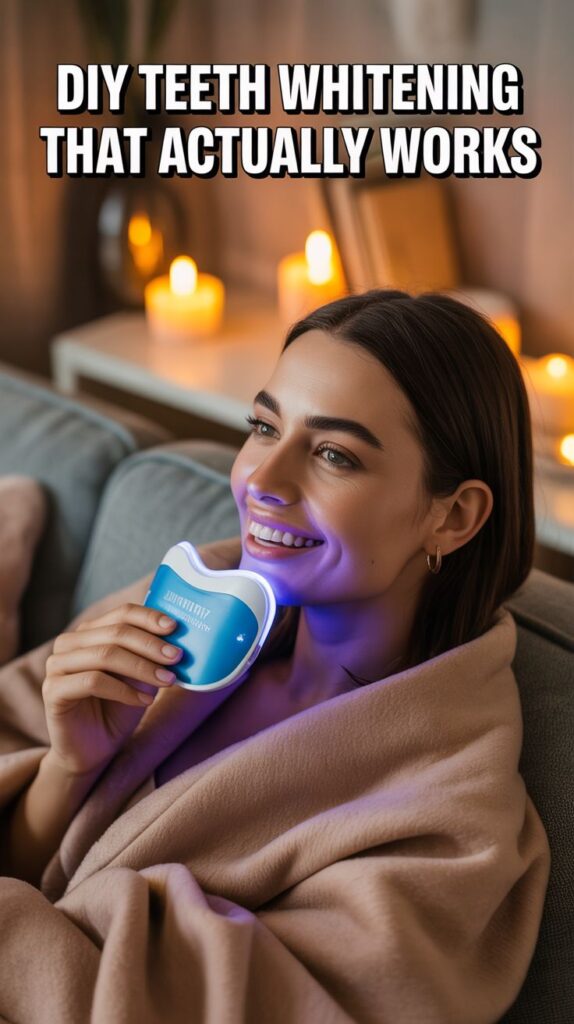
A cozy, well-lit living room with a person sitting on a comfortable grey sofa. On the coffee table in front of them is an at-home teeth whitening kit, complete with an LED light tray, whitening gel syringes, and instructions. The room has warm lighting, a bookshelf in the background, and a soft rug on the floor.
Okay, you’ve mastered the daily routine. Now it’s time to bring out the big guns to tackle those older, set-in stains. The at-home market is packed with options, some great and some… not so much. I’ve put my own teeth on the line to test a few.
Whitening Strips: The Old Faithful
Whitening strips are the gateway drug to teeth whitening for most of us. They’re accessible, relatively affordable, and easy to use. I remember buying my first box in college, hoping to erase years of late-night soda consumption. They work by holding a thin layer of peroxide gel against your teeth for about 30 minutes a day.
The results are definitely noticeable. However, they have a couple of downsides. Ever tried to talk with a slimy strip in your mouth? It’s not a good look. More importantly, if your teeth aren’t perfectly straight, the strips can miss the crooked spots, leading to uneven whitening. And if you have sensitive teeth, be prepared for some potential zingers.
LED Whitening Kits: The Sci-Fi Solution
These kits look like something out of a futuristic movie. You get a tray that fits in your mouth, some whitening gel in syringes, and a blue LED light that plugs into your phone. The idea is that the blue light “activates” or “accelerates” the peroxide gel, giving you faster, more dramatic results. Does it really work?
The jury is still out on whether the light itself does much, but the system as a whole is effective. The main advantage these kits have over strips is the tray.
- Better Coverage: The tray holds the gel against all your teeth surfaces, including the nooks and crannies.
- Stronger Gels: The gels are often a bit more potent than what you find on strips.
- Faster Results: Most treatments take 10-20 minutes a day for about a week.
I found my LED kit gave me a more uniform and noticeable lift than strips did. The downside? They can be a bit messy, and the stronger gel means a higher chance of sensitivity. Always start with a short session to see how your teeth react.
Whitening Pens: For On-the-Go Touch-Ups
A whitening pen is exactly what it sounds like: a small, pen-shaped tube with a brush tip that you use to “paint” whitening gel directly onto your teeth. I keep one in my bag for whitening emergencies—like right after I’ve had a glass of red wine.
Let’s be clear: a whitening pen is not going to give you a full-blown smile makeover. It’s a maintenance tool. It’s perfect for targeting a specific tooth that’s a bit darker than its neighbors or for a quick touch-up before an event. Think of it as concealer for your teeth.
Natural Remedies: Separating Fact from Fiction
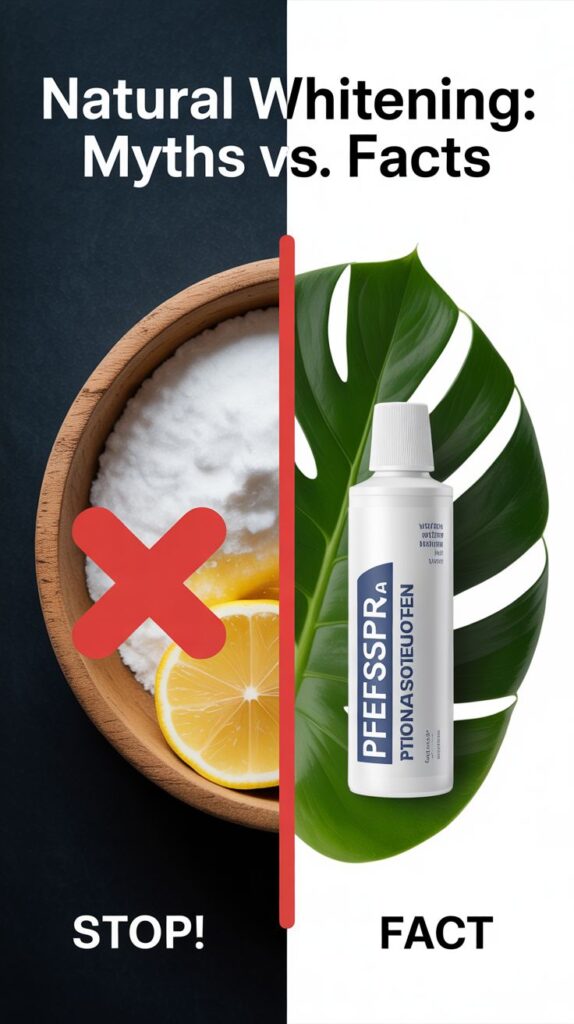
A bright, rustic kitchen with white cabinets and a wooden countertop. On the counter, there’s a bowl of fresh strawberries, a small jar of baking soda, and a bottle of coconut oil. Sunlight streams through a window above the sink, illuminating the clean and airy space.
A quick search for how to get white teeth will send you down a rabbit hole of DIY solutions. Some are harmless, some are a waste of time, and some are downright dangerous for your teeth. Let’s clear a few things up.
The Baking Soda & Lemon Juice Myth
Please, I’m begging you, do not do this. The internet loves to promote a paste made of baking soda and lemon juice as a “natural” whitener. This is like cleaning your windows with sandpaper and acid. Baking soda is highly abrasive and will scrub away your precious enamel. Lemon juice is extremely acidic, which also erodes enamel.
Once your enamel is gone, it’s gone forever. And guess what lies beneath your white enamel? The next layer of your tooth, called dentin, which is naturally yellow. So, by trying to whiten your teeth this way, you are literally setting yourself up for permanently yellower teeth. Just… don’t.
Oil Pulling: The Ancient Trend
Oil pulling involves swishing a tablespoon of coconut oil in your mouth for 15-20 minutes. Proponents claim it “pulls” toxins from the body and whitens teeth. I gave it a solid try for a month. My main takeaways? My jaw got a great workout, and spitting a glob of semi-solid oil into the trash every morning is kind of gross.
Did it whiten my teeth? Not in any dramatic way. It might help reduce some plaque-causing bacteria, which can indirectly make your mouth feel cleaner, but there is no scientific evidence it chemically whitens teeth. FYI, it’s a harmless but time-consuming trend if you want to try it, but don’t expect miraculous results.
Level Up: When to Call in the Professionals
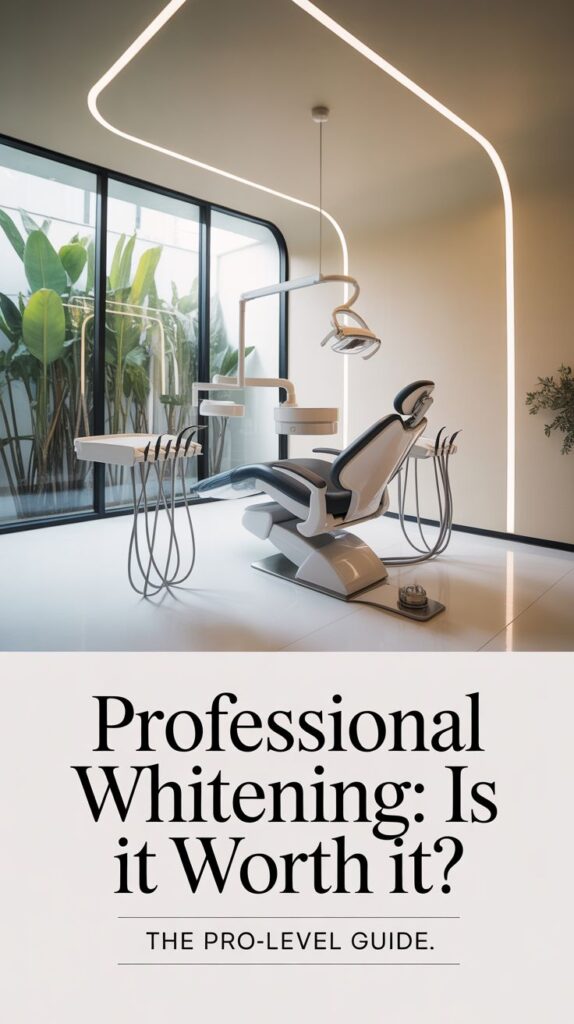
A modern, minimalist dental office reception area. The room is bright and clean with white walls, light wood flooring, and comfortable, stylish armchairs. A sleek reception desk is in the background, and a large piece of abstract art hangs on the wall. The atmosphere is calming and professional, not clinical or intimidating.
If at-home kits aren’t cutting it or if you want seriously dramatic results, fast, it’s time to call your dentist. Professional options are more expensive, for sure, but they offer a level of effectiveness you just can’t replicate at home.
In-Office Whitening: The One-Hour Wonder
This is the fastest way to get white teeth. You sit in the dental chair for about an hour while a professional applies a super-concentrated hydrogen peroxide gel to your teeth, sometimes activated with a special light. The results are immediate and dramatic—you can walk out several shades lighter than when you walked in.
The main drawback is the cost, which can be several hundred dollars. It’s an investment. Also, the high-strength gel can cause significant temporary sensitivity, often described as sharp “zings” in the teeth for a day or two after. But if you have a big event like a wedding coming up, this is your best bet.
Custom Take-Home Trays from Your Dentist
This option is a fantastic middle ground. Your dentist takes a mold of your teeth and creates custom-fitted plastic trays that are a perfect match for your mouth. They also provide you with a professional-strength whitening gel (stronger than OTC kits, but less potent than the in-office stuff).
Custom Trays vs. OTC Kits:
- Fit: Custom trays ensure the gel covers every tooth evenly and, most importantly, keeps it off your sensitive gums. This is a huge plus.
- Effectiveness: The professional-grade gel provides more reliable and significant whitening than store-bought kits.
- Cost: It’s more expensive than an OTC kit but generally more affordable than a full in-office procedure.
I see this as the gold standard for at-home whitening. You get the power of a professional product with the convenience of doing it on your own schedule.
Keeping Your Pearly Whites… Well, White
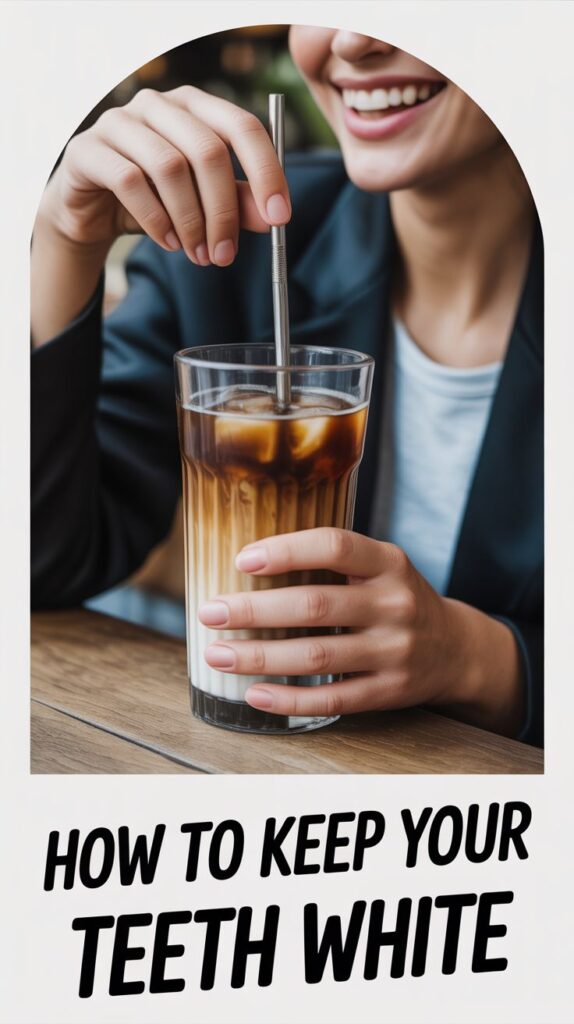
A chic, trendy cafe with a person sitting at a small table by the window. They are smiling and drinking a dark liquid (coffee or tea) from a mug using a reusable metal straw. The cafe has exposed brick walls, hanging plants, and an overall vibrant, modern aesthetic.
So you’ve put in the work and now you have a smile you’re proud of. How do you keep it that way? Maintenance is everything. It would be a shame to undo all your hard work by falling back into old habits.
The Stain-Causing Culprits
You probably already know the main offenders, but they bear repeating. The biggest culprits for staining are intensely colored foods and drinks that can cling to your enamel. Think coffee, black tea, red wine, dark sodas, soy sauce, and berries. I’m not saying you have to give them up (I’d never abandon my morning coffee), but you should be mindful.
Smart Habits for a Lasting Smile
Maintaining your white smile is all about a few simple, consistent habits.
- Rinse with Water: After you have that coffee or glass of wine, swish some water around your mouth. This simple action rinses away a lot of the staining compounds before they have a chance to settle.
- Use a Straw: Drinking dark sodas, iced tea, or iced coffee through a straw helps the liquid bypass your front teeth. It might feel a bit silly drinking hot coffee with a straw, but for cold drinks, it’s a game-changer.
- Don’t Smoke: If you need another reason to quit, here it is. Smoking causes deep, yellow and brown stains that are incredibly difficult to remove.
- Regular Cleanings: Don’t skip your six-month dental check-ups! A professional cleaning removes surface stains and plaque buildup far better than you ever could at home.
So, how do you get white teeth? It isn’t a single magic bullet. It’s a journey that starts with solid daily habits, moves on to effective at-home treatments, and is maintained with smart choices. The secret is consistency.
Whether you choose strips, an LED kit, or a professional treatment, the goal is the same: to feel confident enough to throw your head back and laugh without a second thought. Find the method that fits your budget and lifestyle, and get ready to smile. 🙂
